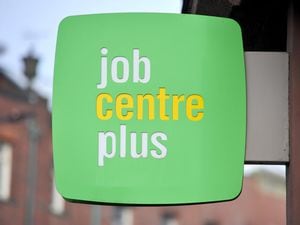Tens of thousands fewer employees in region on furlough in March
Around 10,000 fewer workers in the Black Country and Staffordshire were on furlough in March as the UK started to recover from the second wave of the coronavirus pandemic.

The latest statistics, which reveal the situation before pubs and non-essential shops opened for the first time in months, show that millions of people nationally were still on the income support scheme as of March 31.
HM Revenue and Customs data shows around 18,700 jobs held by workers living in Sandwell were furloughed then. It was 2,100 fewer than the 20,800 furloughed at the end of February and lower than the 21,700 in January.
In Dudley, 18,000 jobs held by workers were furloughed by the end of March – fewer than the 19,900 at the end of February and the 20,600 in January. A total of 15,700 jobs held by workers living in Walsall were furloughed as of March 31 – fewer than 17,400 in February and 18,000 in January.
The data shows around 13,300 jobs held by workers living in Wolverhampton were furloughed by the end of March. It was 1,600 fewer than the 14,900 furloughed at the end of February and lower than the 15,700 in January.
In Stafford, around 7,100 jobs held by workers were furloughed by March 31 – fewer than the 8,000 at the end of February and the 8,300 in January. A total of 6,300 jobs held by workers living in South Staffordshire were furloughed as of the end of March – fewer than 7,200 in February and 7,400 in January.
And the data shows around 5,800 jobs held by workings living in Cannock Chase were furloughed by March 31. It was 900 fewer than the 6,700 furloughed at the end of February, and lower than the 7,000 in January.
Sara Williams, chief executive at Staffordshire Chambers of Commerce, said: “It is good to see businesses bringing people back off furlough as they return to better trading and face fewer restrictions.
“However, the statistics show there are still an awful lot of businesses using the furlough scheme, and so we must do all we can to ensure that the local economic growth continues and that more people get back to work before the scheme ends in September.”
Corin Crane, chief executive officer of the Black Country Chamber, said: “Furlough payments have been a lifeline to individuals whose businesses have been impacted by lockdown restrictions and unable to operate as they had previously.
“Whilst welcomed by businesses and individuals alike, we know that the Job Retention Scheme has created a huge cost burden, and these latest figures confirm a slow but significant start to the pattern of people gradually returning to work and businesses making tough decisions about their labour requirements moving forward.

“Employers should take this opportunity to evaluate their current labour situation in a careful manner and prepare for the latter part of 2021 with options for workforces include reskilling, redeploying, and restructuring.
“While many of those coming off the scheme are returning to work, others will have been taken off the scheme and made redundant. We don’t yet have redundancy figures for March, but early payroll data shows 56,000 fewer employees than in February.
“Women still outnumber men on furlough, with 2.12m females and 1.95m males making use of the scheme. It also disproportionately affects both the young and old, with the under-18 age band having the highest take up rates.
“While we are in the calm before a potential storm, businesses should take this time to be proactive, innovative and considered in their approach to their workforce’s future. Planning is sensible as it’s impossible to tell how large our economic injury is, until we rip off the Government’s furlough plaster.”
Jobs at firms which are unable to operate or have no work for their employees during the Covid pandemic are eligible for furlough pay from the Government – with workers currently getting 80 per cent of their wages, up to £2,500 per month.
The scheme has been extended until the end of September – beyond the planned reopening of all areas of the economy on June 21 – and employers will have to pay a higher contribution from July.
Across the UK, 4.2 million jobs were furloughed as of March 31, down from 4.7 million a month before. The latest figures do not cover the further easing of lockdown in April, which saw customers flood back to salons, gyms, pub gardens and non-essential shops across the UK.
But the Resolution Foundation, which focuses on living standards, said they indicate that the lifting of restrictions has “taken some of the heat off furlough”.
“At the end of March, 4.2 million employees were furloughed. Initial estimates from Office for National Statistics business survey data suggest that as restrictions were eased, the number furloughed fell to just over 3 million”, the think tank said.
“Still, firms in social consumption sectors like hospitality and leisure had over half of their employees furloughed in March.
“These are some of the lowest paid sectors containing a high share of young workers.”





